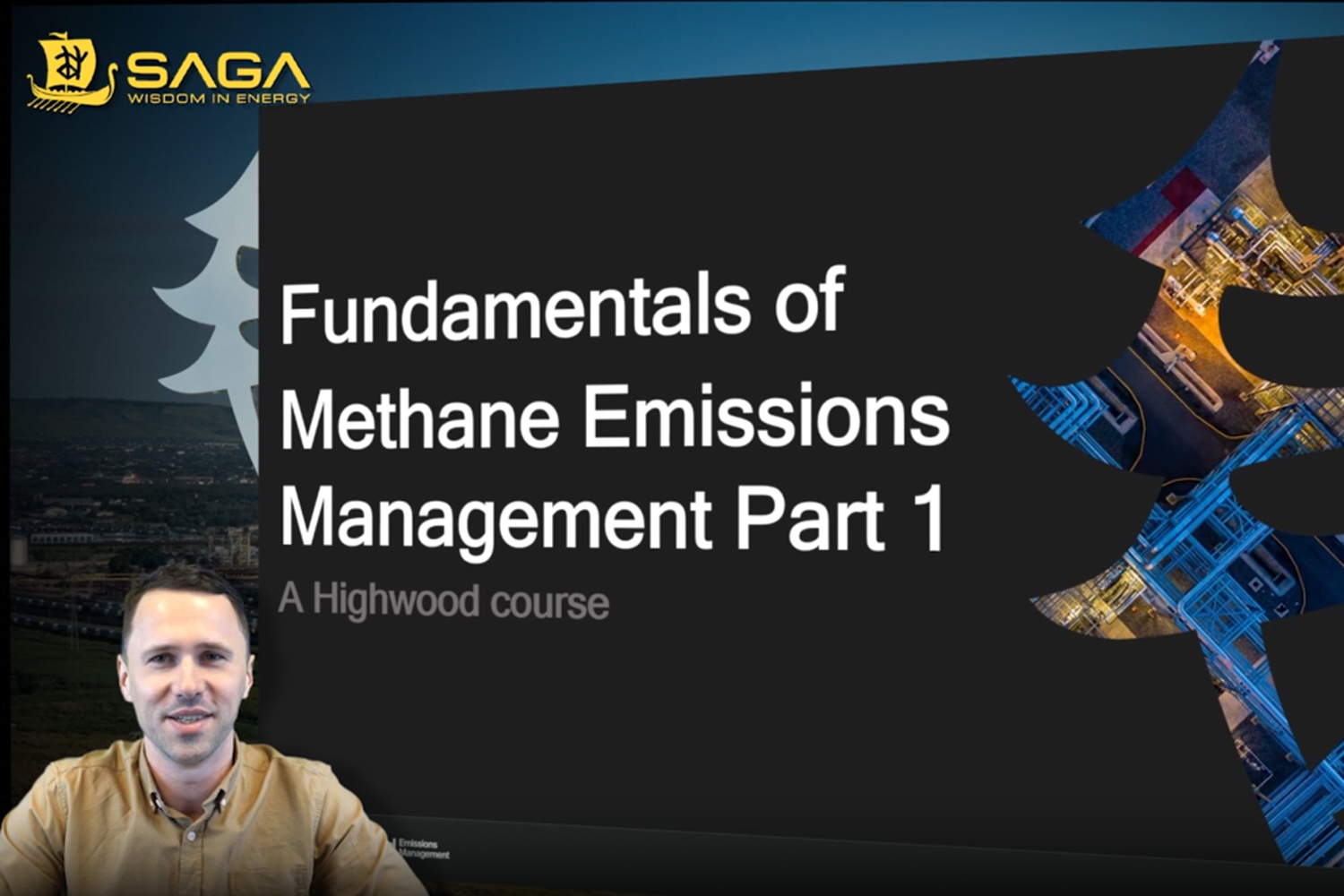Emissions Insights: Real-time insights amid fast paced change
The first step towards managing and reducing greenhouse gas emissions is understanding where they’re coming from, and how much there are. This has historically been a challenging and labor-intensive process. New emissions inventory tools are enabling companies to turn static emissions data into dynamic, usable, information to drive better decision making.
What is an emissions inventory?
When people think of the term “inventory”, they may think that this is just a list of all equipment operating within their fleet. An accurate equipment list is important, but this is just the beginning.
An emissions inventory accounts for every source of greenhouse gas emissions from within a company’s portfolio. At its core, a simple emissions inventory multiplies “emissions factors” (emissions per source) and “activity factors” (how many sources there are), to arrive at an estimate of a company total. This may include combusted, vented, and fugitive emissions. There are many ways that this can be improved and made more accurate, such as using company-specific emissions factors, rather than industry averages, using data from direct measurement, or considering specific operating parameters for the equipment in question. This provides companies a more accurate view into their past and current emissions and helps identify opportunities to make long-term improvements.
Adopting a robust, well-maintained inventory is the basis for long-term emissions planning and tracking. In this article, we discuss some of the many benefits of having a good inventory and explore some of the common challenges operators face when building and maintaining an inventory.
Benefits of strong inventory management
Managing greenhouse gas emissions (CH4, CO2, and NO2) is becoming increasingly important for oil and gas companies. Maintaining regulatory compliance, remaining competitive on a global scale, participating in voluntary initiatives, and environmental stewardship are among the many reasons for implementing strong emissions management programs. Without a robust baseline, reductions plans and use of emerging technologies may be misdirected, ineffective or underutilized.
Regulatory and voluntary disclosure
A company with a robust, maintained, and up to date emissions inventory will find compliance reporting season to be much easier. Knowing exactly what your emissions are, and how they are being counted, will allow for forecasting and budgeting for applicable carbon pricing payments within annual budget cycles. A regularly maintained inventory will ease the burden of calculating and reporting annual emissions totals and subsequent auditing.
Companies may also consider going above and beyond regulatory requirements and participating in one of a broad range of voluntary emissions reduction initiatives. These initiatives showcase a company’s strong performance and commitment to emissions reduction. To read more about voluntary initiatives, read Highwood’s Voluntary Emissions Reduction Initiatives- Volume 2 report. Voluntary initiatives require companies to go above and beyond- reducing their emissions intensities, deploying methane detecting technology, and reconciling their inventories with measurement, among others. Companies participating in voluntary initiatives must be prepared with robust data to be audited and verified. A well managed inventory is an important component of voluntary disclosures.
Leverage data for decision-making
A basic inventory may suffice, but decisions based on robust emissions inventories will have stronger outcomes. For example, a company can also use their emissions inventory to identify areas of potential change. Identifying high-emitting equipment or sites, finding the best equipment retrofit or replacement projects, and doing it in the most cost-effective ways, can be maximized through strong inventory management. Beyond identifying meaningful opportunities for improvement, an emissions inventory can enable companies to track their emissions over time and prove their long term progress towards reductions goals. Generating forward-looking plans for what improvements to make, and when to make them, will allow companies to better plan their capital expenditures and spend them effectively, with greater confidence. Some of Highwood’s popular tools like LDAR-Sim and Reduction Pathways rely on solid inventories to make accurate predictions.
Assurance and integrity
As more governments commit to strong greenhouse gas reduction plans, lowering emissions will be key for companies to remain competitive on a global scale. Companies have an opportunity to showcase their leadership by taking assertive action to understand their emissions, to then reduce them. Investors are increasingly interested in companies with robust sustainability strategies. One of the easiest ways that a company can showcase this, while also improving their transparency, is through a well maintained inventory.
A verifiable, transparent inventory may open access to capital, or may facilitate mergers and acquisitions. An accurate and well managed inventory can provide an instant view into the potential emissions liabilities associated with a company, which may be important for potential investors and for companies evaluating others for purchase or merging. Without this information, potential stakeholders are left guessing, and this uncertainty may deter investment. Since emissions inventories are dynamic, accurately tracking changes over time is critical for assurance to these stakeholders.
The challenge with inventories
There currently exists no standardized framework for collecting and maintaining inventories- both equipment and emissions. Thus, in most cases, different pieces of information are collected and tracked by multiple people across an organization and are usually not combined effectively. In practice, this makes inventory data very difficult to apply towards emissions management and reductions goals. Additionally, due to the lack of framework, many operators have a poor understanding of what data beyond equipment count should be collected, and why it matters.
The emissions space is rapidly changing and requirements are constantly evolving. Spreadsheet-based inventories take a significant amount of time to build and maintain, especially to have to overhaul when regulations are updated. By making use of an inventory management platform, the amount of work needed to update your inventory is drastically reduced. Being able to visualize changes in near-real time offers significant advantages over labor-intensive manual updates.
The way forward
Highwood’s new software module, Emissions Insights, streamlines the entire emissions inventory process for you by uploading your data into the system, applying quantification calculations, and determining a baseline of your Scope 1 and 2 emissions. As part of the Emissions Management Toolkit (EMT) ecosystem, Emissions Insights goes far beyond spreadsheet capabilities and unlocks the full potential of your emissions inventory to start your journey towards making data-driven decisions.
To learn more, check out our website, or contact us.






